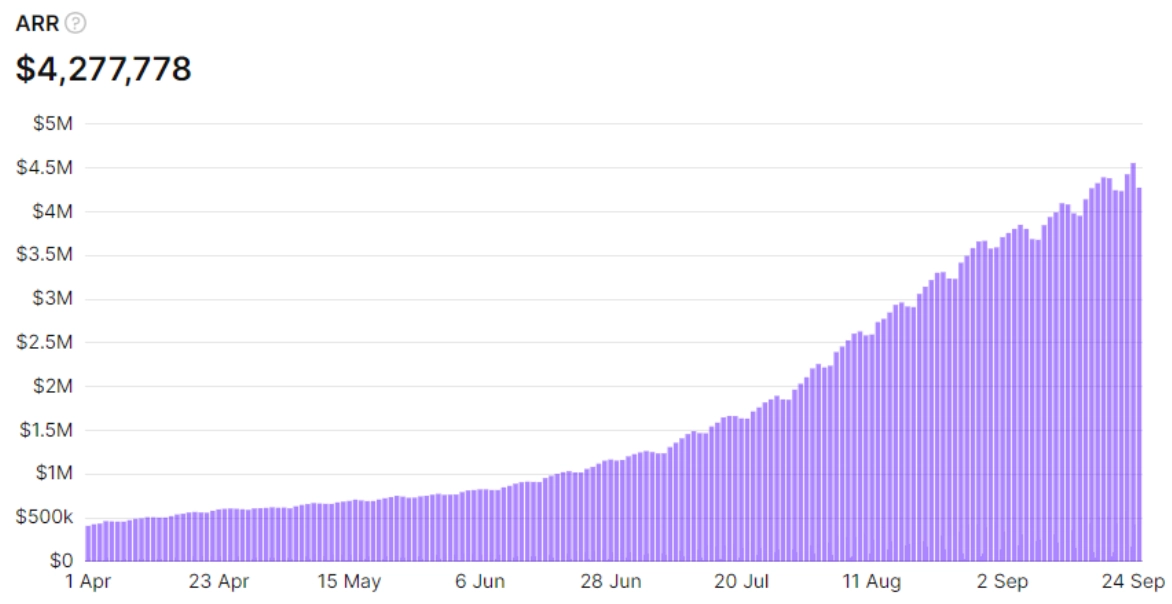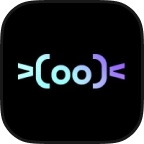Fotorama
Impala
Highlights
- Team members: 1
- Time to create the MVP: 1 day
- Current ARR: $4M
- Downloads: >55k
- Main growth factor: Paywall A/B testing
Going from a high-powered business executive to a solo indie developer might seem unlikely. Yet, this is exactly what Josh Mohrer did. He swapped his executive role to become a solo app developer, armed only with his vision and determination.

Today, his AI-powered app, Wave: AI Note Taker, is a testament to his bold move, reaching $4M ARR in 8 months. This case study explores Josh’s inspiring journey, showing how he turned his passion project into a profitable business, overcoming the challenges of indie app development along the way.
Background and transition to indie development
Josh Mohrer, a former business executive, made a significant career shift to become an indie app developer. His professional journey began in the world of e-commerce, where he developed proficiency in business and technology.
Josh’s interest in e-commerce started in high school with selling items on eBay. This early experience laid the foundation for his future roles in various startups, including his notable position as the head of Uber New York. There, he played a pivotal role in developing the mobile app for ride-sharing, a project that would later influence his approach to app development.

Josh transitioned into app development to use his extensive business background in a new and exciting way. His first project was a simple yet effective app for the Uber office in 2015. This initial success ignited his interest in the field, prompting him to teach himself engineering and explore AI-powered applications.
Wave and first development challenges
The popularity of AI played a crucial role in Josh’s journey as an indie developer. The inspiration for the app he was planning to work on came from the notion of making AI language models more accessible. The idea was to use a third-party AI service and create a user-friendly interface for interacting with it in the most convenient and useful way possible. That’s how Wave: AI Note Taker appeared.

The working process was pretty simple and intuitive: the app recorded audio, transcribed it, and summarized the transcription. Such an approach proved to be super useful at business meetings, brainstorms, lectures, and many other cases. As the development process advanced, new features were added like phone call recording or separate audio file transcription.
The first concept of the app was aimed at iOS, so Josh chose Swift. Although Swift made coding easier, creating a full-scale app was still a challenge for a non-professional developer. Josh found his solution in OpenAI’s Chat GPT.
The AI language model was incredibly powerful for coding. Even the first iteration of ChatGPT allowed Josh to work independently without consulting anyone else. He would break down large chunks of code into smaller parts and ask the AI to write each segment. This method worked so well that the first concept of the app was ready within one day!

Finding the right tools for growth
Focusing on iOS app development, Josh faced typical challenges, especially creating an infrastructure for in-app purchases. Building a server wasn’t an option, so he chose a third-party solution to integrate IAPs and add extra features. However, this solution lacked consistency, with some revenue-growing features being inconvenient third-party add-ons.
Seeking a better alternative, Josh found invaluable support from Adapty. The SDK integration took just a few days and opened up numerous possibilities. The main reason for choosing Adapty was having in one place mobile analytics, paywall builder, and A/B testing tools. All this made the launch and iteration of paywall A/B tests quick and painless – which was the key to the app’s growth.
Josh happened to be using Adapty’s paywall builder since its launch – the 1.0 version, despite being less functional than it is now, in his opinion was much more convenient and useful than the 3rd party solution provided by the competitor he had used.
Being in a constant state of searching for a better and more effective paywall concept is a vital element of growth. The heavy use of Meta ads for acquisition proved an effective promotional strategy for Wave and made proper A/B testing possible. So from a financial perspective, early investment in user acquisition for an indie developer will be rewarded.
Reaching $4M ARR with Wave
It’s truly impressive to see what heights Josh managed to achieve with the app being a sole creator. Apart from design and ad promotion, all the aspects of the app are developed and maintained by Josh. He even does the customer support work himself, meticulously replying to every user’s email.
Thanks to Adapty and strategic ad promotion, Josh achieved remarkable success with Wave: AI Note Taker, reaching $4M ARR in 8 months. The substantial use of paywall A/B testing helped optimize subscription rates and improve conversion. The willingness to experiment and adjust strategies based on user feedback played a significant role in this achievement.

Conclusion and advice for indie app developers
Josh Mohrer’s journey from a business executive to a successful indie app developer is a great example of innovation and perseverance. By using Adapty’s tools and his business skills, Josh turned Wave: AI Note Taker into a profitable venture in no time. His story shows that with dedication and a willingness to learn, you can achieve big success.
At Adapty, we encourage you to take the leap and develop your first app, and we’re here to help you grow it every step of the way.
And to make sure, your first attempt should be successful, here’s a set of essential steps you may want to take to make:
- Finalize and release your app: Ensure your app is fully developed and tested. Preparing a launch strategy, including marketing and PR efforts, is a good idea.
- Optimize for App Stores: Use ASO (App Store Optimization) techniques to improve visibility. Optimize your app title, description, and keywords. Use high-quality screenshots and an engaging app icon.
- Analyze your app’s performance: Monitor app performance using real-time analytics. Track key metrics like user engagement, retention rates, LTV, and revenue.
- Gather and implement user feedback: Continuously collect feedback from users and make sure to implement improvements and new features based on user suggestions.
- Test different traffic channels: Experiment with acquisition channels (social media, search ads, influencer marketing, etc.). Try investing in ads and experiment with targeting. It’s vital to understand which channels bring the most valuable users.
- Conduct paywall A/B testing and scale: Use tools like Adapty to test different paywall designs, pricing models, and offers. Identify the most successful paywall variant based on A/B test results and scale it up.
- Continue testing and optimization: Keep testing new paywall variants and traffic channels. Regularly analyze performance and make data-driven adjustments.
Each app and each developer’s journey is unique, but by following these core principles of launch and scaling, you can ensure sustained growth and success in the competitive app market.









